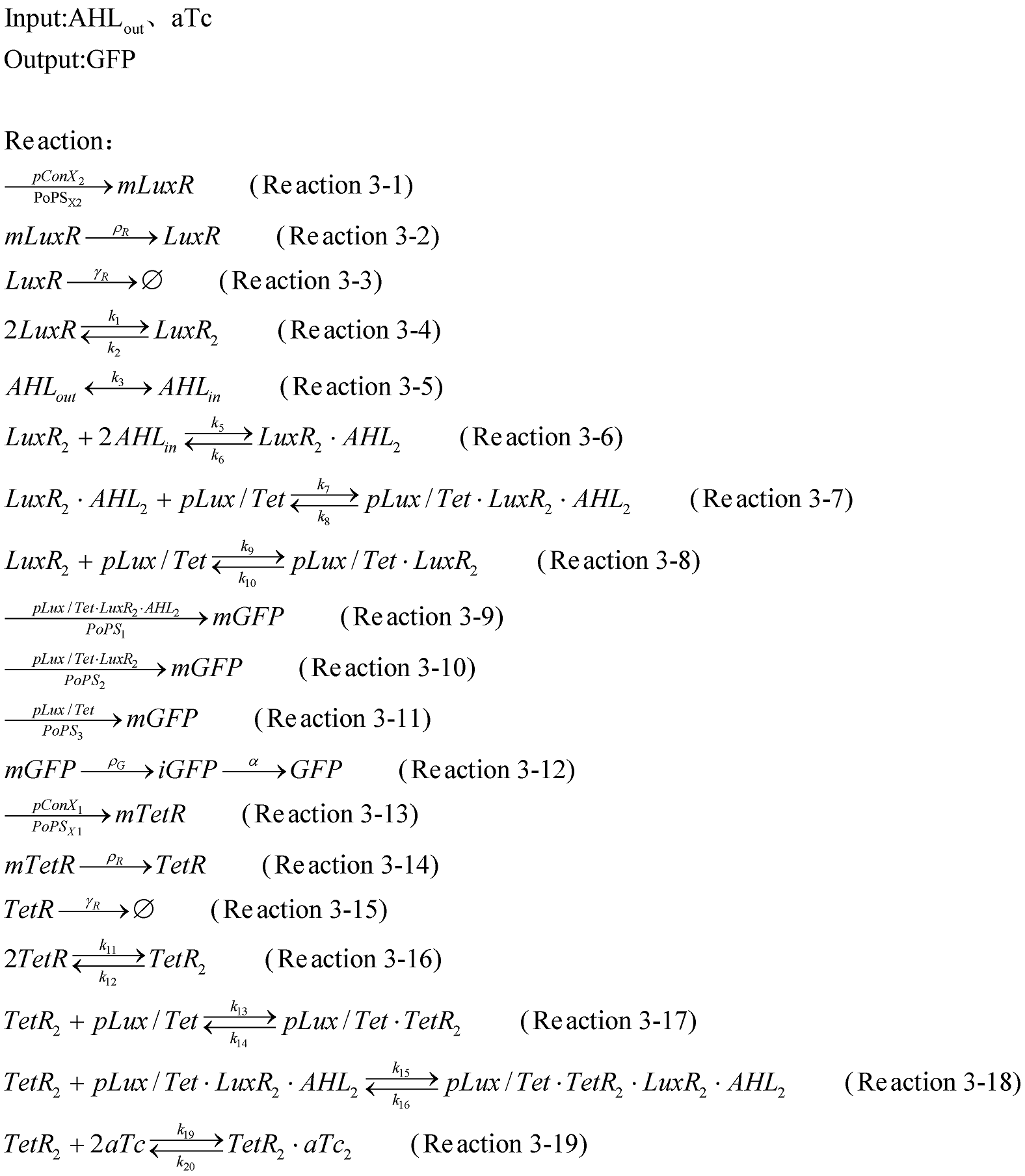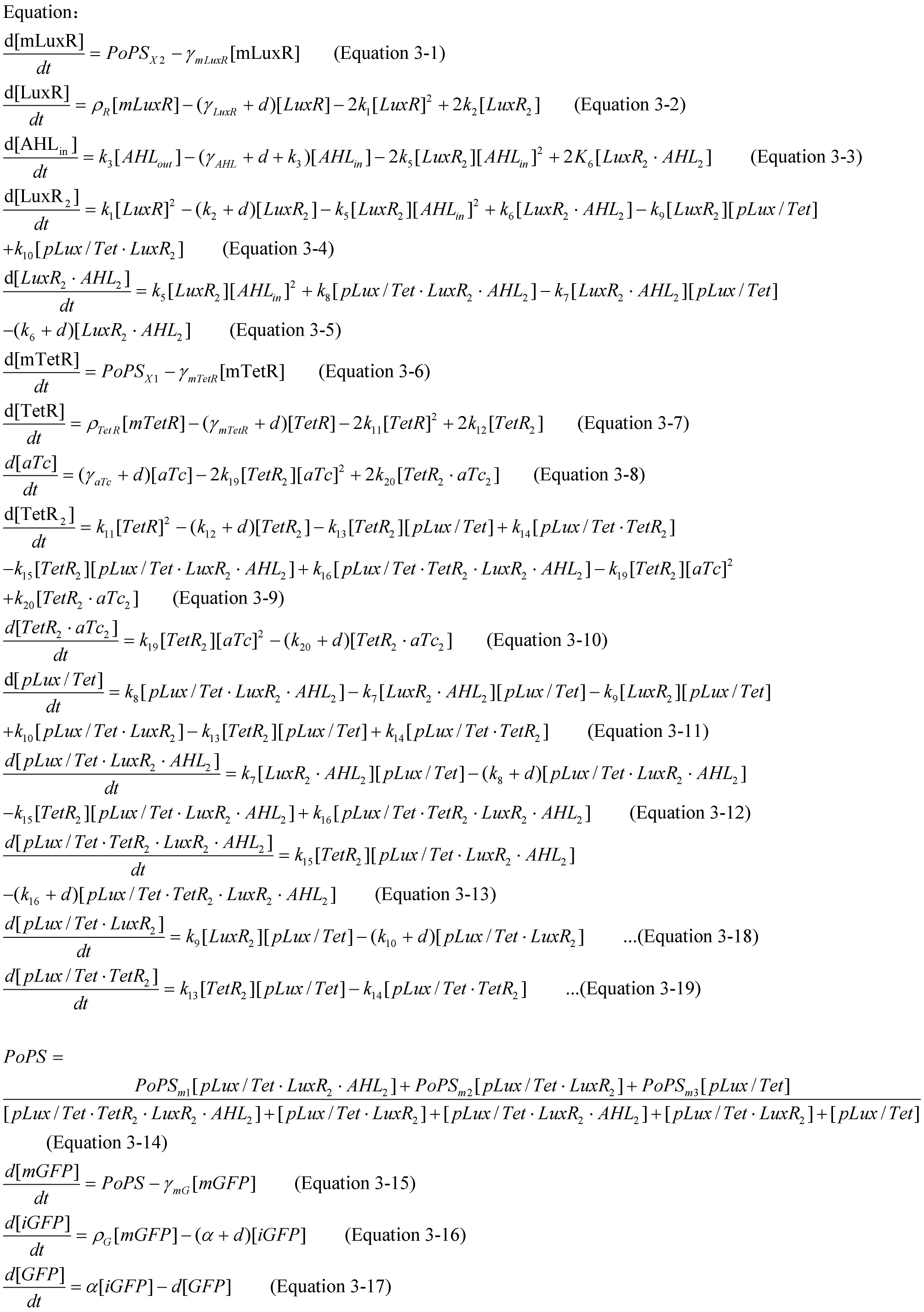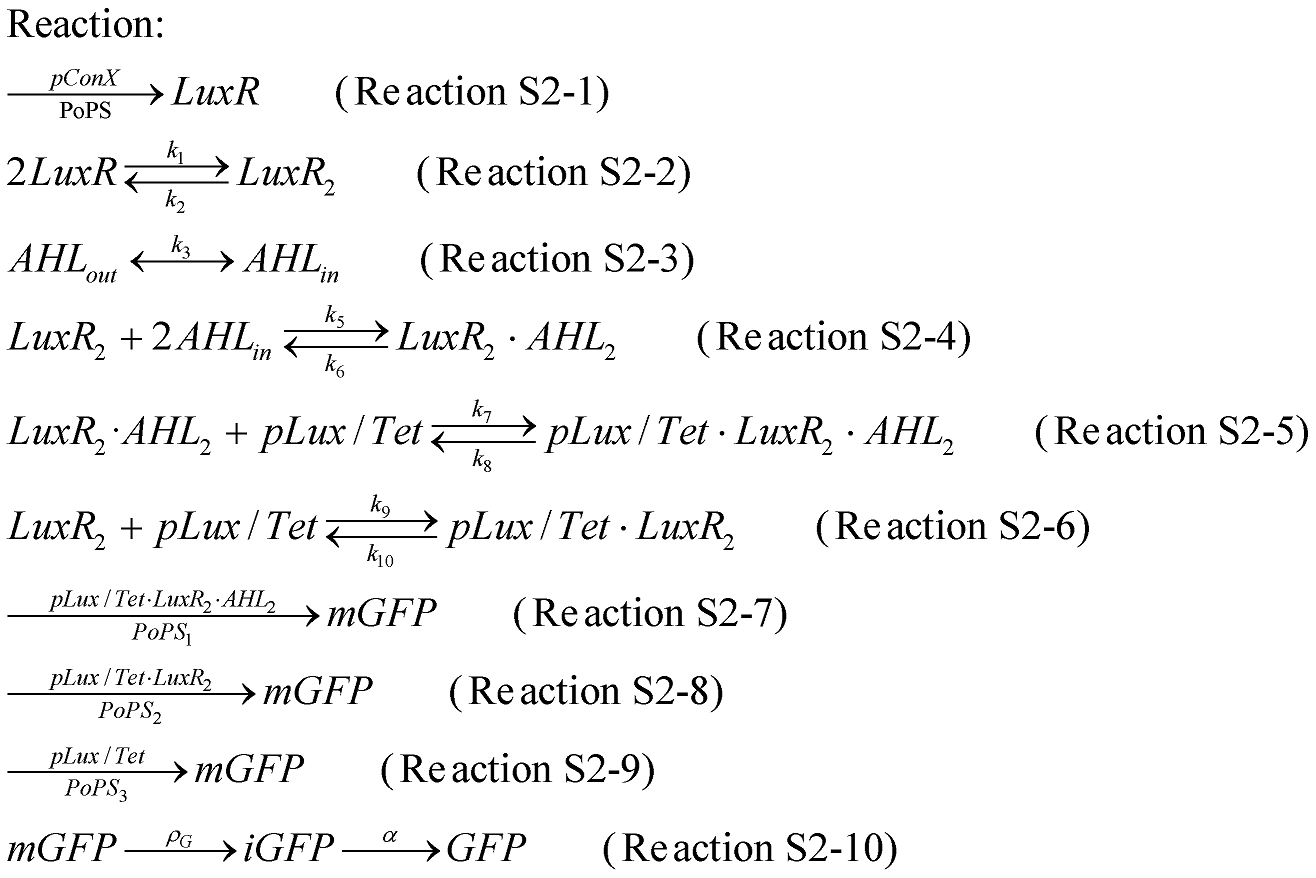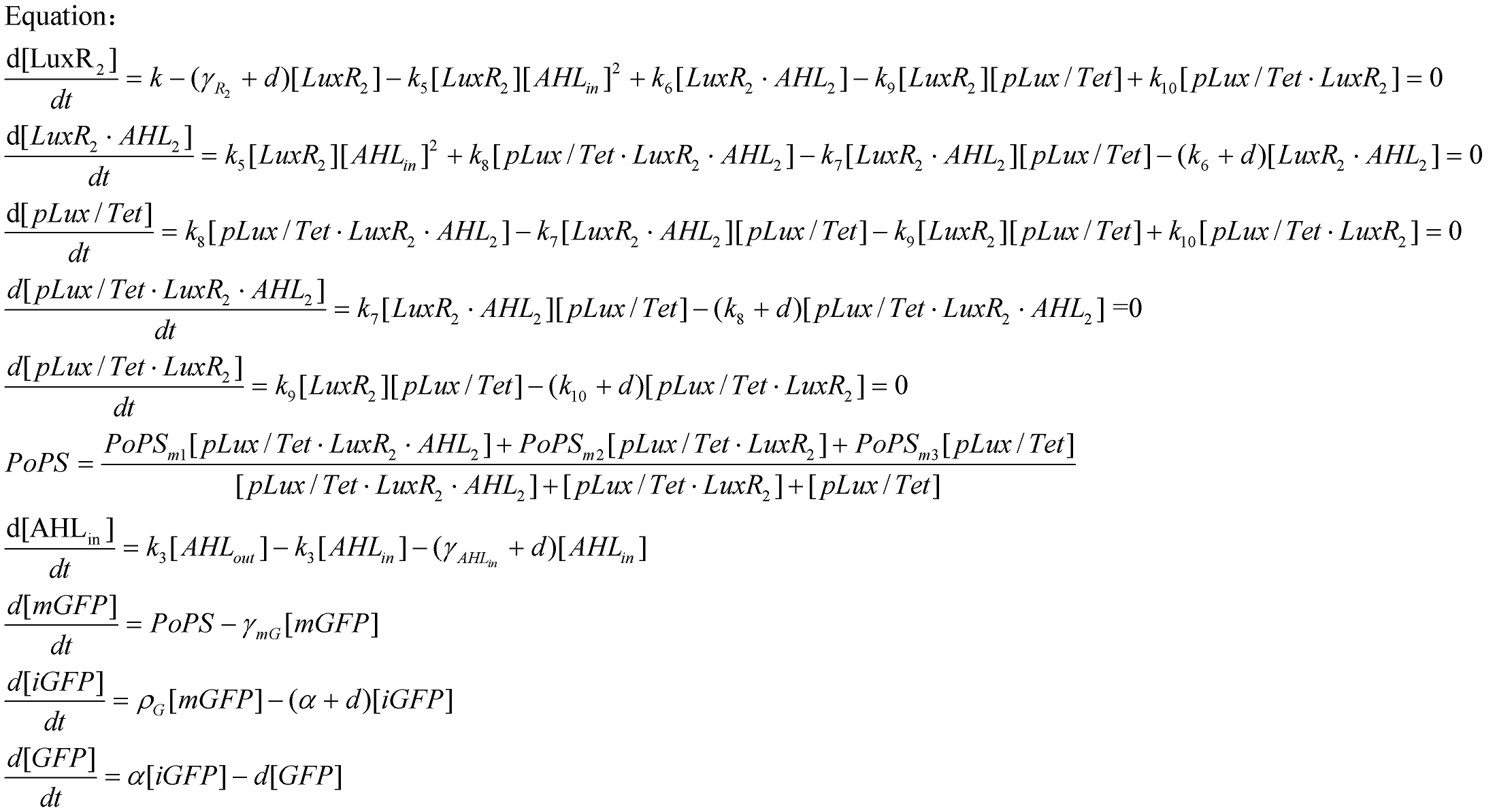Team:USTC/Modeling/Model-3
From 2009.igem.org
(Difference between revisions)
| Line 10: | Line 10: | ||
== '''Simplified Model-3''' == | == '''Simplified Model-3''' == | ||
| + | |||
| + | The modeling is similar to the [[Team:USTC/Modeling/Model-2|'''Simplified Model-2]] | ||
We employed an ODE model. We defined the input to be AHL<sub>out</sub> the and the output to be the synthesis rate of mature GFP. | We employed an ODE model. We defined the input to be AHL<sub>out</sub> the and the output to be the synthesis rate of mature GFP. | ||
[[Image:s-m-2-1.jpg|550px]] | [[Image:s-m-2-1.jpg|550px]] | ||
| - | |||
To simplify the model, the (Recation S2-4), (Recation S2-5) and (Recation S2-4) were considered to be able to get balance in a very shortly time. | To simplify the model, the (Recation S2-4), (Recation S2-5) and (Recation S2-4) were considered to be able to get balance in a very shortly time. | ||
Revision as of 07:42, 21 October 2009
| Home | Team | Project | Modeling | Parts | Standard & Protocol | Software Tool | Human Practice | Notebook |
|---|
Team:USTC/Modeling/Model-3
Contents |
pConX1+tetR+pConX2+LuxR+pLux/Tet+GFP
Parts: K176066 K176067 K176070 K176071 K176074 K176075 K176078 K176079 K176136 K176138 K176140 K176142 K176144 K176176 K176178 K176180 K176182 K176184
Simplified Model-3
The modeling is similar to the Simplified Model-2 We employed an ODE model. We defined the input to be AHLout the and the output to be the synthesis rate of mature GFP.
To simplify the model, the (Recation S2-4), (Recation S2-5) and (Recation S2-4) were considered to be able to get balance in a very shortly time.
The values of 4.8E-3 for rmG, 4.8E-3 for a and 0.4 for pG were got from the F2620, and the value for d of 0.00368 based on the measurement of the OD.
 "
"




